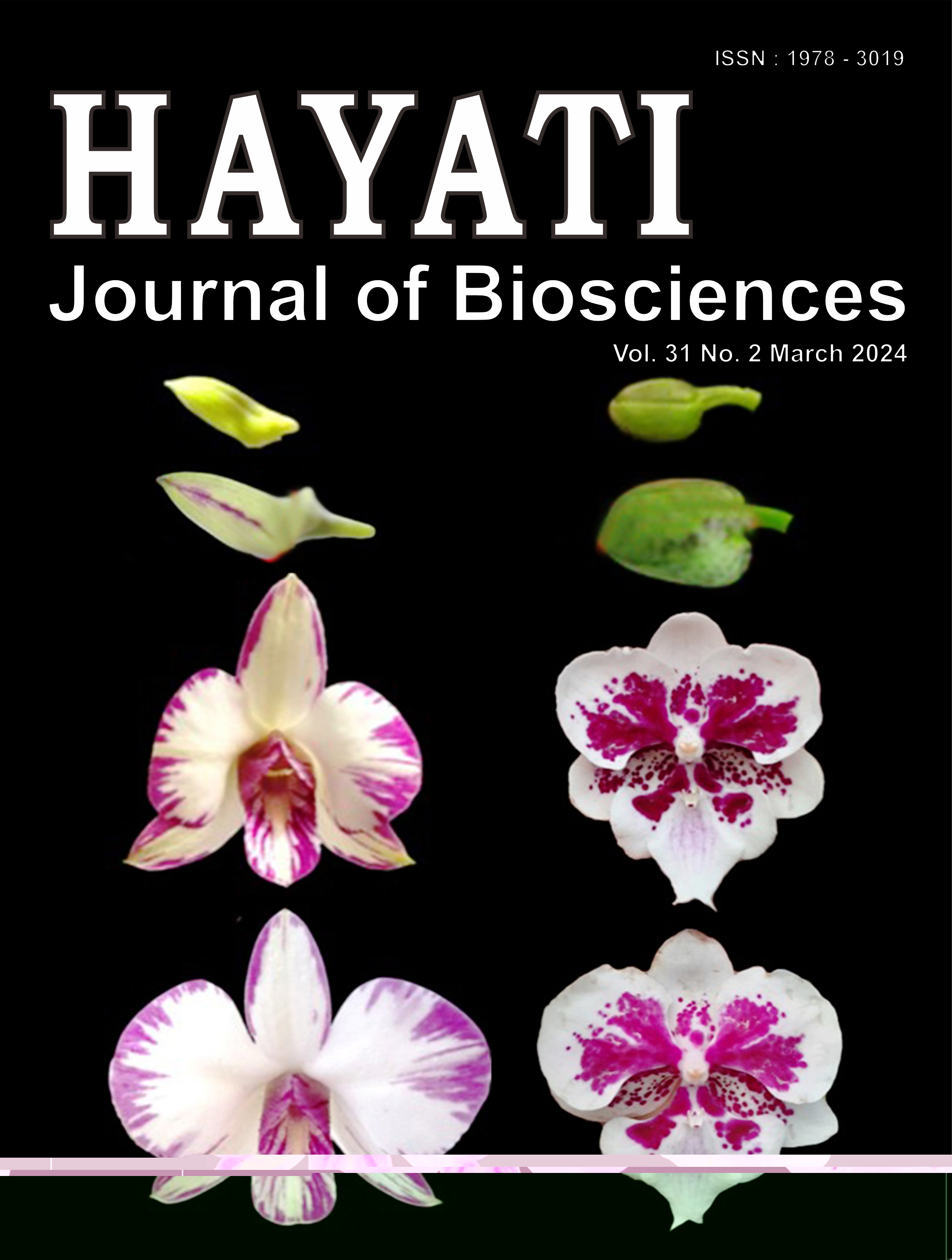Salt and Heat Stress Trigger Morpho-Physiological Changes, Antioxidant Enzyme and Secondary Metabolites Gene Expression in Rice (Oryza sativa L.)
Abstract
Climate change significantly increases salt and heat stress in rice plants. This condition causes plants to activate antioxidant enzymes and produce secondary metabolites. This study aimed to determine the morpho-physiological changes and gene expression profiles of antioxidant enzymes and secondary metabolites. This study used a completely randomized design factorial. The first factor was local rice varieties (IR64, Silaun, and Cigeulis), and the second factor was stress treatments (control, NaCl 150 mM, 40°C, and NaCl 150 mM + 40°C). The results showed that multiple stress significantly affected the plant height, stem length, stem diameter, leaf area, root length, total main root, plant biomass, necrotic length, chlorophyll content, relative water content, and plant ROS production. Multiple stress could up-regulate the gene expression of antioxidant enzymes (Mn-SOD, Cu/Zn SOD, Cytosolic APX, OsAPX1, CAT, OsCATA, and GPOD) in rice after stress combination treatments and increase the secondary metabolites gene expression (P5CS and GABA-T) in all rice varieties. Still, the OsNOMT gene was only active in the Cigeulis variety.
Downloads
Copyright (c) 2023 Mohammad Ubaidillah, Noor Rozzita, Mitha Aprilia Mufadilah, Nurhaliza Thamrin , Agung Nugroho Puspito, Kyung Min Kim

This work is licensed under a Creative Commons Attribution-NonCommercial 4.0 International License.
HAYATI J Biosci is an open access journal and the article's license is CC-BY-NC. This license lets others distribute, remix, tweak, and build upon author's work, as long as they credit the original creation. Authors retain copyright and grant the journal/publisher non exclusive publishing rights with the work simultaneously licensed under a https://creativecommons.org/


















.png) IPB University
IPB University Department of Biology
Department of Biology The Indonesian Biological Society
The Indonesian Biological Society 

